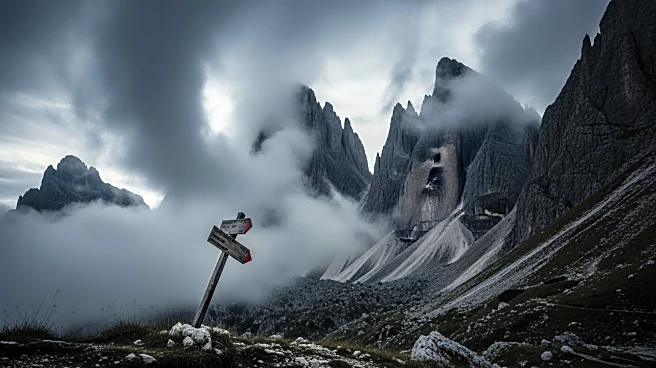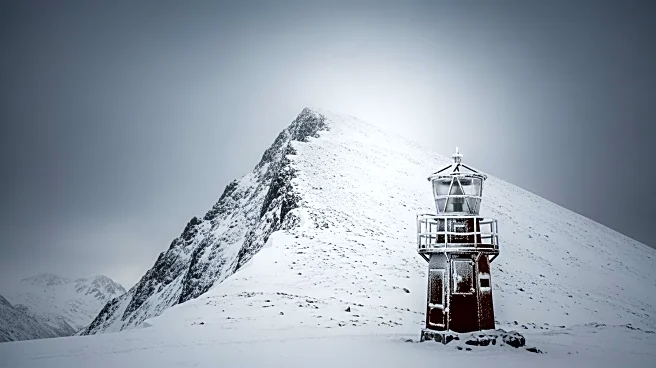What's Happening?
On November 17, a sudden blizzard with winds reaching 193kph struck the O Circuit trail in Chile’s Torres del Paine National Park, resulting in the deaths of five international trekkers. The incident has
led to intense criticism of park management, staffing levels, weather forecasting, and rescue delays. The O Circuit is a challenging trek that circles the Torres del Paine massif, featuring long distances between campsites and exposed passes. A group of about 40 hikers started the trek on November 14, forming a casual alliance through shared campsites. The storm hit as they approached John Garner Pass, the highest point of the circuit. Survivors have criticized the absence of rangers due to Chile’s presidential election, which reduced staffing. Weather forecasts were inaccurate, predicting winds far less severe than those experienced. The rescue response was delayed, with helicopters grounded due to extreme conditions, forcing survivors to self-evacuate.
Why It's Important?
The tragedy highlights significant safety concerns in managing remote and challenging trekking routes. The criticism of park management and the lack of accurate weather forecasting underscore the need for improved safety protocols and real-time monitoring in such environments. The incident has sparked a criminal investigation into possible negligence and failure to assist persons in danger. The survivors' accounts have fueled public backlash against the park authority and the campground operator, emphasizing the importance of mandatory professional guides on high-risk routes. The event serves as a reminder of the unpredictable nature of mountain weather and the necessity for preparedness and adequate staffing to ensure the safety of trekkers.
What's Next?
CONAF, the park authority, has suspended new O Circuit reservations for December 2025–February 2026 and is conducting an internal review. The prosecutor has announced a formal investigation into the incident, with survivor testimony forming the backbone of the case. No charges have been filed yet, but the investigation remains active. The incident may lead to changes in park management practices, including mandatory guides and improved weather monitoring systems. The tragedy has prompted discussions on the need for better safety measures and protocols in remote trekking areas.
Beyond the Headlines
The incident raises ethical questions about the responsibility of park authorities to ensure the safety of visitors in remote and challenging environments. The lack of real-time weather monitoring and the optional guiding on a difficult route highlight potential gaps in safety protocols. The tragedy may lead to long-term shifts in how such treks are managed, with increased emphasis on safety and preparedness. The event also underscores the importance of international cooperation in repatriating victims and supporting survivors.













